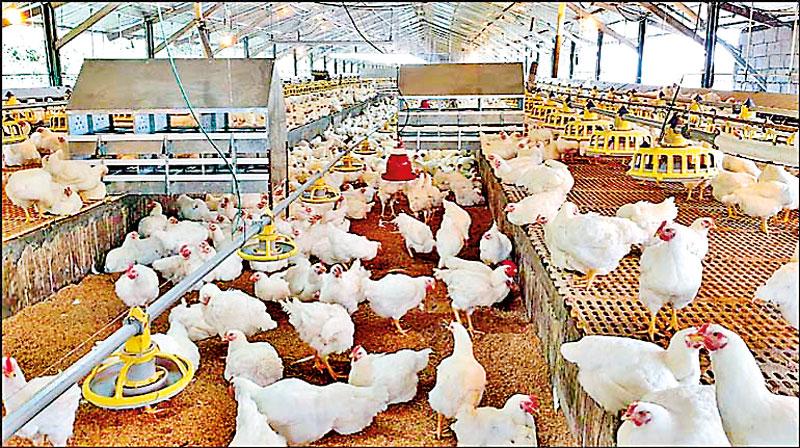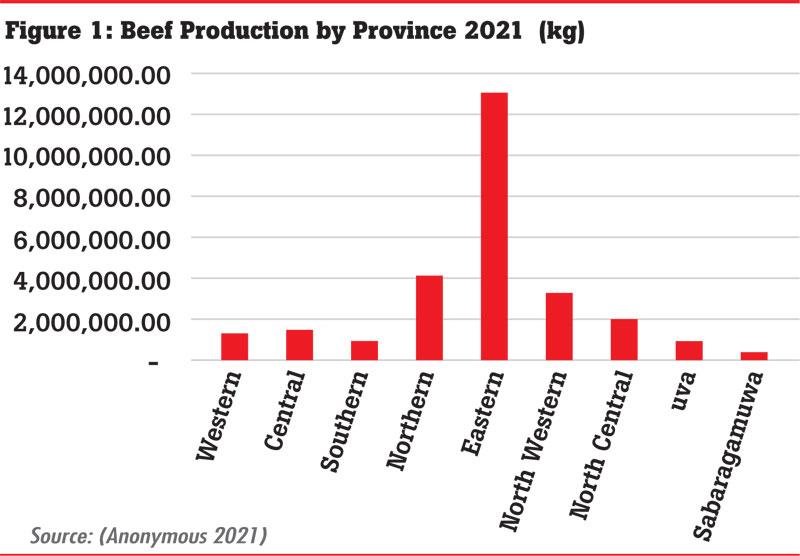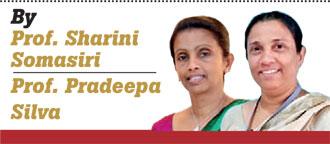21 Sep 2023 - {{hitsCtrl.values.hits}}

 It is easy to shut down an agricultural operation, but it will take years and years to revitalise such an industry to the level that existed It is easy to shut down an agricultural operation, but it will take years and years to revitalise such an industry to the level that existed |

 As humans, our bodies cannot synthesise some amino acids (essential amino acids) and it is important to get these from food sources. Consumption of meat and eggs is essential for us to intake the much-needed essential amino acids. Consumption of livestock products (red/white meat, fish, milk eggs etc.) provides us with proteins, fat, vitamins and minerals. If we avoid eating meat, we won’t be able to meet the daily requirements of nutrients.
As humans, our bodies cannot synthesise some amino acids (essential amino acids) and it is important to get these from food sources. Consumption of meat and eggs is essential for us to intake the much-needed essential amino acids. Consumption of livestock products (red/white meat, fish, milk eggs etc.) provides us with proteins, fat, vitamins and minerals. If we avoid eating meat, we won’t be able to meet the daily requirements of nutrients.
 Rearing livestock - cattle, buffalo, goats, sheep and poultry species-has become a challenge in Sri Lanka. There is social pressure for rearing them for meat purposes. On the other hand, rearing them has become difficult due to the skyrocketed feed/feed ingredient prices and reduction in the availability of the above due to the prevailing economic crisis. Let us first talk about the social pressure. Sri Lanka, being a multi-ethnic group country, needs to cater to the demands of people from different races. Some prefer to eat meat, while some don’t. The last demographic survey, the Department of Census and Statistics reported that the ethnic composition of our country is 75% Sinhalese, 15% Tamil, 9% Muslim and 1% other ethnic groups. The same report published the composition of religion as 70% Buddhism, 12.6% Hindu, 9.7% Islam, 1.4% Christian and others. In a study done in an area where the majority of the population is Muslim (68%) and Hindu (18%), the pattern of meat and processed meat consumption are given in Table 1 and 2, which show that the majority of demand is for beef and chicken. The authors of this study further stated that the consumers prefer to have meat once or two twice a week. Out of the total population of 22.18 Mn (Anonymous 2022a) in Sri Lanka, a majority consumes at least one type of meat.
Rearing livestock - cattle, buffalo, goats, sheep and poultry species-has become a challenge in Sri Lanka. There is social pressure for rearing them for meat purposes. On the other hand, rearing them has become difficult due to the skyrocketed feed/feed ingredient prices and reduction in the availability of the above due to the prevailing economic crisis. Let us first talk about the social pressure. Sri Lanka, being a multi-ethnic group country, needs to cater to the demands of people from different races. Some prefer to eat meat, while some don’t. The last demographic survey, the Department of Census and Statistics reported that the ethnic composition of our country is 75% Sinhalese, 15% Tamil, 9% Muslim and 1% other ethnic groups. The same report published the composition of religion as 70% Buddhism, 12.6% Hindu, 9.7% Islam, 1.4% Christian and others. In a study done in an area where the majority of the population is Muslim (68%) and Hindu (18%), the pattern of meat and processed meat consumption are given in Table 1 and 2, which show that the majority of demand is for beef and chicken. The authors of this study further stated that the consumers prefer to have meat once or two twice a week. Out of the total population of 22.18 Mn (Anonymous 2022a) in Sri Lanka, a majority consumes at least one type of meat.
According to Table 3, chicken is the highest-produced meat in Sri Lanka compared to others. However, mutton, beef, chicken and pork are also imported to the country every year and suppliers spend millions of rupees to cater to the demand from consumers and industries (Table 4).
In Sri Lanka, the majority of the livestock farmers are smallholders who depend on the forages available in the surroundings and concentrate on feeds in the market. The two main feed ingredients that are imported to the country are maize and soybean meal which are abundantly used by poultry and other feed manufacturers (Table 6). Import restrictions due to the recent Forex issue, increase in the world market price of these two ingredients, policy changes related to LC, depreciation of LKR, and difficulties in obtaining freight facilities were the main issues identified as what restricted the importation of the above two feed ingredients in the year 2021 onwards (Anonymous 2022b). As a result, the prices of these two feed ingredients along with the other imported feed ingredients have skyrocketed.
(economy next 2023). This decision could have a negative impact on the local chicken industry in the long run. The main reason for the low egg production within the country was the dollar crisis, which led to the non-availability of many inputs essential for the industry. Owing to the low availability of these inputs, their cost increased tremendously and became scarce in the local market. In poultry farming, more than 70% of the cost of production is incurred on feeds. As a result, many small-scale poultry farmers faced the issue of maintaining poultry farms. Many farmers started to sell the layer birds for meat and shifted to broiler farming (economy next 2023). This led to the reduction of the parent stocks and as a result, the price of a day-old layer bird became unaffordable by the small-scale farmers. It is easy to shut down an agricultural operation, but it will take years and years to revitalise such an industry to the level that existed. The authors started research with village chicken with funds from the National Research Council in 2022 and had to spend more than the estimated due to the high price of feed ingredients. At the time of the proposal writing in 2019 the price of one kg of maize meal was LKR 12.50 and by the time the research was implemented in 2022 it was LKR 250.00 marking a 20-fold increase in the price.
Thus, it is clear that the recent abrupt decisions and unwise actions taken by relevant authorities to patch up the situation without paying attention to the long-term repercussions have affected the livestock industry immensely and left the small and medium-scale livestock and poultry farmers, who represent the live wire of the sector, out of business. The authorities need to make informed decisions to reinstate the conducive environment immediately, though the ‘point of no return’ has almost passed.
Prof. Sharini Somasiri of the Department of Animal and Food Science, Faculty of Agriculture, Rajarata University of Sri Lanka
Prof. Pradeepa Silva of the Department of Animal Science, Faculty of Agriculture, University of Peradeniya

09 Jan 2025 41 minute ago
09 Jan 2025 1 hours ago
09 Jan 2025 1 hours ago
09 Jan 2025 2 hours ago
09 Jan 2025 2 hours ago